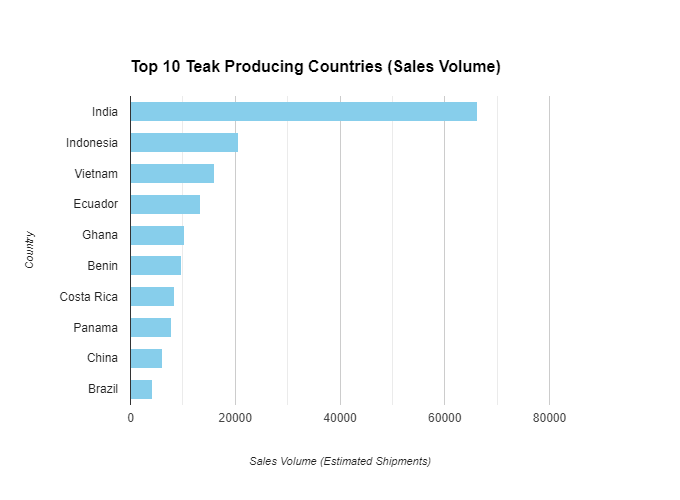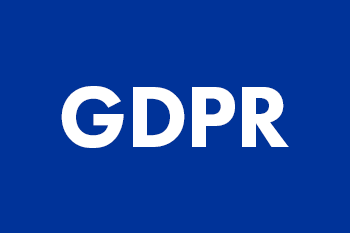List of Top 10 Global Teak Wood Producers: Teak Forests & Teak Plantations Countries in the Global Teak Industry
LEARN HUB
Where does teak grow?
TOP TEAK PLANTATIONS
While Southeast Asia is the geographic origin of natural teak forests. Teak is highly valued. Teak is one of the most popular hardwoods in the world. The desire for teak trees (Tectona grandis), teak logs, and timber is high.
The amazing wood properties of teak and the durability of teak wood. This has increased the demand for teak wood production.
While natural teak forests are declining. Global supply expands through managed plantations worldwide, including in Africa and Latin America. to meet tremendous global trade demand for this high-quality wood.
At Zenddu, we are proud to source our premium Indonesian teak. From SVLK-certified teak plantations. This ensures high wood quality and teak production. Customers enjoy teak’s full warmth and character. Preserving this treasured tropical hardwood for future generations.
Here are the 10 largest commercial teak plantation-producing countries operating today:

Discover the Major Teak Growing Countries: Plantations, and Planted Teak Forests in the Global Teak Industry
Map of the top ten teak-growing countries in the world.
Teak's top plantation-producing countries. Teak Wood Export Markets
- India
- Indonesia
- Vietnam
- Ecuador
- Ghana
- Benin
- Costa Rica
- Panama
- China
- Brazil

1. India
India claims the crown as the world’s highest volume teak supplier. With an estimated 66,274 shipments as of December 2023. The nation has a rich history of teak cultivation dating back centuries. In states like Kerala, Karnataka, Tamil Nadu, Andhra Pradesh, and Maharashtra.
These southern regions offer fertile soil, ample rainfall, and warm temperatures. Ideal for robust teak growth. Teak from South India is known for its tight grain patterns and quality timber.
However, India’s teak industry faced sustainability concerns. Past practices that involved deforestation to clear land for new plantations.
In response, the government implemented stricter regulations. Enforcing responsible harvesting methods paired with reforestation efforts to offset habitat loss. This shift towards sustainable plantation management practices. Aims to ensure the long-term viability of India’s teak resources.
Quality: varies from region to region. Teak from South India is generally considered to be of the highest quality.
Main locations: Kerala, Karnataka, Tamil Nadu, Andhra Pradesh, and Maharashtra
Map of the main locations growing teak in India
2. Indonesia
Ranking as the second-largest global teak exporter. With an estimated 20,588 shipments. Indonesia has a well-established and expertly managed teak plantation industry. The fertile islands of Java, Sumatra, Kalimantan, and Sulawesi. Provide an ideal environment with volcanic soil, abundant rainfall, and warm tropical climates.
These conditions contribute to Indonesian teak’s distinctive rich golden-brown color and exceptional durability. Which makes it a preferred global source.
The nation plays a lead role in promoting responsible forestry. Participating in international efforts to combat illegal logging. Indonesia encourages sustainable forest management principles through its legal SVLK certification system. Aiming to protect natural resources while ensuring the industry’s future.
Despite successes, Indonesia’s teak sector faces ongoing challenges. Balancing economic priorities with environmental responsibility through stricter regulations and efficient plantation practices.
Quality: wood is considered to be of very high quality. Golden-brown color and good durability.
Main locations: Java, Sumatra, Kalimantan and Sulawesi
Map of the main locations growing teak in Indonesia
3. Vietnam
An emerging player at third globally with around 16,064 shipments. Vietnam’s teak industry emphasizes sustainability from the start. Growing regions like the Central Highlands, Southeast Vietnam, and the North Central Coast. Provide the right balance of soil, rainfall, and temperatures for optimal cultivation.
While relatively new as a major producer. Vietnam already sets itself apart through a nationwide commitment to responsible forestry practices. The government actively promotes reforestation alongside teak plantation development to cut environmental impact. Additionally, Vietnamese operations are known for highly efficient plantation management. That yields strong harvests.
A key challenge is ensuring consistent quality. As the teak trade industry expands, timber quality can vary based on the age of the plantation teak trees. Sustained teak planting and sustained production of teak logs are critical. Maintaining rigorous standards across all plantations will be crucial looking ahead.
Quality: varies depending on the age of the trees, with older teak being of higher quality.
Main locations: Central Highlands, Southeastern Vietnam, North Central Coast
Map of the main locations growing teak in Vietnam
4. Ecuador
At roughly 13,305 shipments annually, Ecuador ranks fourth among global teak suppliers. The nation’s rainforest regions are Esmeraldas, Manabí, Los Ríos, and Guayas. Are home to flourishing teak plantations. Producing wood with a characteristic light golden-brown color.
Unlike some other major producers Ecuador’s focus is exclusively on cultivated teak. From plantations rather than depleting wood from natural forests. This plantation-centric approach reduces the environmental toll. Compared to deforestation for agricultural teak expansion.
The government has demonstrated a strong emphasis on maximizing efficiency and sustainability. Officials streamline production processes to ensure cost-effectiveness and smooth access to international markets. Ecuador also participates in global sustainable teak trade initiatives. Aimed at verifying responsible practices throughout the supply chain.
However, challenges persist in balancing profit motives with protecting long-term ecological interests. Through research, optimized forestry management, and promoting ethical harvests.
Quality: generally considered to be of good quality, with a light golden-brown color.
Main locations: Esmeraldas, Manabí, Los Ríos, Guayas
Map of the main locations growing teak in Ecuador
5. Ghana
Ranking fifth globally at approximately 10,367 shipments. Ghana plays a significant role in supplying teak to the greater African market. The nation’s fertile Ashanti, Brong-Ahafo, Western, and Central regions. Offer warm temperatures, adequate rainfall, and enriched soils. Ideal for cultivating Ghana’s fast-growing African teak species.
While this variety reaches maturity more rapidly than Asian teak. Sustainability remains a core issue as the Ghanaian teak industry evolves. With historically unsustainable practices like deforestation for new plantations. To counter this, officials implemented tighter regulations. To encourage reforestation in tandem with teak cultivation. A broader industry shift prioritizes adopting sustainable forest management to preserve resources long-term.
Maintaining this balance between economic interests and environmental preservation. Efficient yet eco-conscious practices like community partnerships. Preventing illegal logging remains an ongoing challenge. Teak plantation establishment is a priority.
Quality: generally considered to be of good quality, with a dark golden-brown color.
Main locations: Ashanti, Brong-Ahafo, Western, and Central
Map of the main locations growing teak in Ghana
6. Benin
Approximately 9,719 shipments annually. Benin is the sixth-largest global teak producer. Despite its relatively small size compared to other major suppliers. The country plays an outsized role in feeding Africa’s teak market. This is thanks to plantations thriving across regions like Collines, Borgou, and Donga.
A key strength for Benin’s industry is its commitment to sustainable teak forestry. The national government takes active measures. Like combating illegal logging, upholding responsible harvesting mandates, and funding reforestation. This eco-conscious approach enhances Beninese teak’s reputation and value for ethical sourcing. With the aim of increasing the growth and yield of teak to meet global demand for the supply of teak.
However, Benin must work to strike a balance between teak’s economic benefits, and protecting the environment. Improving efficiency across the entire teak supply chain. Verifying sustainable practices at each stage remains an area of focus.
Quality: generally considered to be a good-quality teak with a golden-brown color.
Main locations: Collines Department, Borgou Department, Donga Department resource.
Map of the main locations growing teak in Benin
7. Costa Rica
As the world’s seventh-largest teak exporter, with around 8,311 shipments. Costa Rica exemplifies harmonizing economic development with environmental sustainability. The nation cultivates teak across its Guanacaste, Alajuela, and Limón provinces. Providing a warm climate, abundant rainfall, and fertile volcanic soil, teak trees love.
Rather than depleting native forestland, Costa Rica prioritizes the responsible management of plantations. Established explicitly for sustainable teak harvesting. The country actively participates in global efforts aimed at guaranteeing ethical sourcing practices. Like legal harvesting certification and parallel reforestation initiatives. Planted teak forests have attracted praise and bolstered Costa Rica’s reputation. It provides premium teak wood from reliable, principled sources.
Moving forward, the key challenge will be continuing to balance economic growth. While enforcing consistent, important wood quality control. Further minimizing any environmental impact as operations scale.
Quality: generally considered to be of good quality, with a golden-brown color.
Main locations: Guanacaste Province, Alajuela Province, and Limón Province
Map of the main locations growing teak in Costa Rica
8. Panama
Panamania teak plantations contribute an estimated 7,775 shipments annually. The nation’s economy ranks it as the eighth-largest global producer. Prime cultivation provinces include Chiriquí, Veraguas, and Herrera. Which provide ideal teak growing conditions.
A major focus for Panama’s legal teak trade is optimizing efficiency and sustainability. Along every link of the supply chain. Government initiatives streamline teak harvesting, manufacturing, and export processes. To maximize cost-effectiveness and smooth access to international markets.
Panama’s reputation as a responsible supplier. Is further reinforced through its conscientious forestry policies centered around plantation management. Rather than deforestation of native trees. Demonstrating both ethical and environmentally-conscious teak sourcing strengthens the nation’s position. In a discerning global market.
However, the ever-present challenge remains finding equilibrium. Between Teak’s potential economics and ensuring profits don’t come at the cost of environmental damage. Continuous improvement of sustainability practices will be key.
Quality: generally considered to be of good quality, with a golden-brown color.
Main locations: Chiriquí Province, Veraguas Province, and Herrera Province
Map of the main locations growing teak in Panama
9. China
While not yet a teak superpower. The domestic Chinese teak industry continues to develop. With around 6,139 shipments annually. Prominent growing regions include Guangxi, Yunnan, and Hainan provinces. All suitable for productive teak cultivation.
Importantly, inconsistent-quality teak plagues much of China’s current teak output. Depending on the specific plantations and management practices involved. However, the controlled scale of the nation’s teak sector. Allows for more focused management and quality control measures. Individual plantations compared to larger producing countries.
Government-funded research initiatives and stricter regulatory enforcement. Aim to standardize a baseline premium level for all Chinese plantation teak. Verified responsible sourcing policies, both for domestic and imported teak. It will also be crucial for China’s industry to become a respected global supplier.
- Quality: The quality of Chinese teak can vary depending on the source.
- Main locations: Guangxi Province, Yunnan Province, and Hainan Province
Map of the main locations growing teak in China
10. Brazil
Rounding out the top teak producers at approximately 4,114 shipments is Brazil. Which operates rather differently than other nations on this list. Brazilian teak plantations like Bahia, Espírito Santo, Minas Gerais, and São Paulo. Primarily serve domestic demand rather than dominating international exports.
This inward industry focus offers both advantages and limitations. On one hand, it minimizes the environmental strain of logging and transportation. Since teak never leaves Brazil’s borders. This contained model could allow uncompromising quality control. Vetting of ethical sourcing practices for 100% of national stocks.
However, by staying small and insular. Brazil misses out on economic windfalls from tapping into the global teak trade. There is certainly room for calculated expansion. If environmental and social responsibility remain the top priorities.
- Quality: General
- Main locations: Bahia, Espírito Santo, Minas Gerais, São Paulo
Map of the main locations growing teak in Brazil
Note: Zenddu’s wood comes from government-controlled plantations. It comes with an SVLK (v-legal) certificate.
REGISTER NOW TO SEE ALL OUR PRODUCTS
Please complete our catalogue registration form. To get access to our online catalogue. With our full range of over 12,000 products.
You will get immediate access. To access in the future visit our homepage www.zenddu.com and log in using the password provided at any time.
We will also send you information on any new products and the latest industry news.
Our Friendly AI Support
CHAT WITH ZENA
Meet Zena, our AI Customer support. She is available 24/7. She speaks over 95 languages, you can chat with her in any language.
She can answer basic questions like Do you have a catalogue and price list? or technical questions. Like the specification of any raw material, or the cubic capacity of a container. If you planning on visiting Indonesia she can also suggest places to visit during your stay.

If you ask her personal questions like, How old are you? Do you like your job? What’s your salary? Do you have a boyfriend? Who is Zendy? She can be a little sarcastic, depending on her mood.
She is very knowledgeable and friendly. Chat with her! Use the chat button in the bottom right-hand corner.
FURTHER READING
USEFUL LINKS
World Trade Organization (WTO)
International Trade Centre (ITC)
United Nations Conference on Trade and Development (UNCTAD)
Asia-Pacific Economic Cooperation (APEC)
International Trade Administration
European Free Trade Association (EFTA)
Association of Southeast Asian Nations (ASEAN)
Indonesian Ministry of Trade (Kementerian Perdagangan)
Indonesian Directorate General of Customs and Excise (Bea Cukai)
Watch our videos with information about us, our services to retailers and for hospitality projects, what custom made products we can make and our quality control processes.
YOUR SUPPLY PARTNER IN INDONESIA
Looking for new products for your store or next project?
Useful link: Indonesian Ministry of Trade

